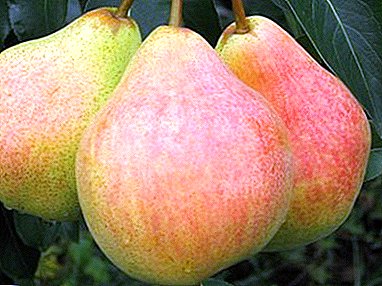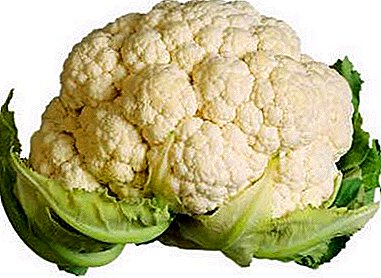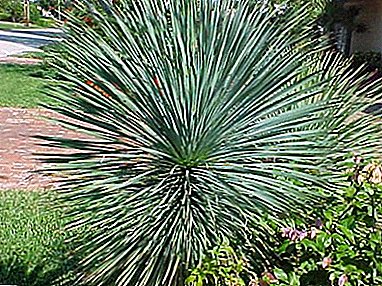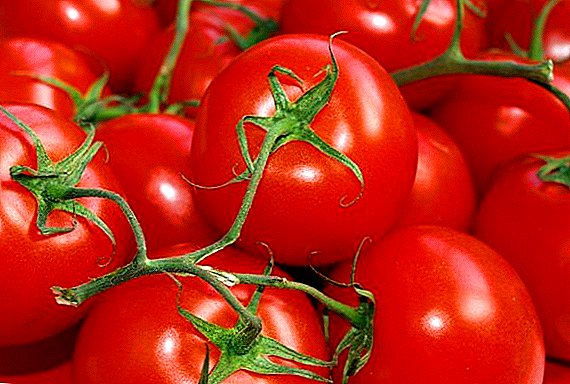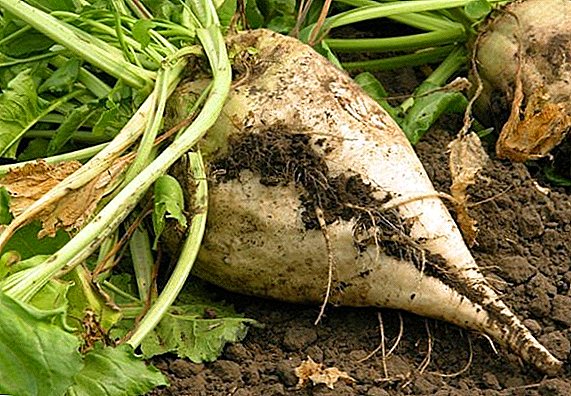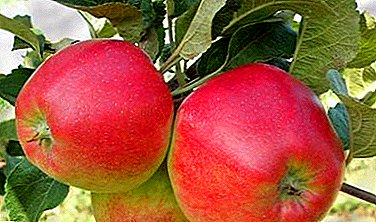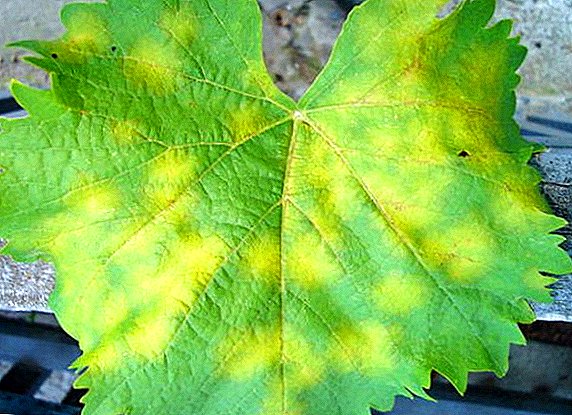 One of the most dangerous enemies of grapes is the fungal disease mildew. Many gardeners have been trying to fight this disease for more than a dozen years, but not everyone succeeds.
One of the most dangerous enemies of grapes is the fungal disease mildew. Many gardeners have been trying to fight this disease for more than a dozen years, but not everyone succeeds.
Let's look at the causes of the appearance of the disease and find out how to deal with it.
Description and danger of illness
Mildew (or downy mildew) is one of the most dangerous fungal pathologies of European grape varieties. This disease hit the vineyards of England in 1834. They brought it along with new grapes from North America. For a short period of time mildew spread throughout Europe. The great decline in grape yields at the beginning of the twentieth century is also due to the appearance of downy powdery mildew.
Important! Mushroom-like organisms from the Peronosporov family that cause downy powdery mildew are called oomycetes.Clarified spotted areas are observed on infected grape leaves. Young leaves form small round spots of an oily yellow color, while older leaves form angular spots along the veins. When wet and warm weather mildew begins to progress. Over time, on the lower part of the leaf, under the affected areas, appears grayish-white, shiny fluff of mycelium.
 All other parts of the plant are affected in a similar way: ridges, antennae, shoot tips, inflorescences and young grapes. Inflorescences affected become yellow and curled. Over time, they darken and dry up. Sick berries, the size of which reaches the size of a pea, begin to grow brown, and then shrivel and die (such berries are called “leathery”, after infection they are no longer suitable for eating or making wine).
All other parts of the plant are affected in a similar way: ridges, antennae, shoot tips, inflorescences and young grapes. Inflorescences affected become yellow and curled. Over time, they darken and dry up. Sick berries, the size of which reaches the size of a pea, begin to grow brown, and then shrivel and die (such berries are called “leathery”, after infection they are no longer suitable for eating or making wine).  In most cases, infected leaves fall prematurely, and the affected shoots dry out.
In most cases, infected leaves fall prematurely, and the affected shoots dry out.Did you know? Edward Tucker - one of the first scientists who tried to overcome the downy powdery mildew. To remove mildew, he suggested using an aqueous solution of sulfur and hydrated lime.In order to "expel" mildew from the grapes, you need special chemical agents, often used to combat it and on other plants.
Causes of downy mildew
The pathogen mildew belongs to the group of false powdery mildew fungi and is closely related to the blue mold of tobacco, peronospora of hops and late blight of potatoes. At the confluence of the male and female nuclei of hyphae, zoospores are formed, which can overwinter on fallen leaves of grapes without any special problems.
Throughout the summer and early autumn, oospores actively reproduce in the affected leaves. They have a very thick inner wall, so they easily tolerate cold and wet winters.  At the beginning of April, when the soil is still quite wet, but the air temperature in the daytime is already at least + 8ºС, zoospores enter the active phase. They create one sprout tube each, at the end of which there is a single sporangium. If with the help of rain, wind or fog this sporangia falls on a grape leaf, it will break the shell and release more than 60 zoospores.
At the beginning of April, when the soil is still quite wet, but the air temperature in the daytime is already at least + 8ºС, zoospores enter the active phase. They create one sprout tube each, at the end of which there is a single sporangium. If with the help of rain, wind or fog this sporangia falls on a grape leaf, it will break the shell and release more than 60 zoospores.
These small lumps of plasma begin to move in drops of liquid with the help of flagella. When they find the stomata, they form a tubule in it that grows inside the tissues and causes a primary infection.
Important! At a temperature of + 26 ... + 27 ºС and high humidity, mildew can infect grapes in just 1 hour.The process of infection of a healthy grape leaf occurs most quickly at a temperature of + 20 ... +27 ºС. In such conditions, sporangia will have time to infect a grape bush within 4-7 hours. At temperatures below + 8 ° C and above + 30 ° C, sporangia cannot germinate, so infection does not occur.
 With the help of haustoria, hyphae grow quickly and get all the necessary nutrients from the grape cells.
With the help of haustoria, hyphae grow quickly and get all the necessary nutrients from the grape cells.The incubation period lasts from 5 to 18 days, depending on the season and weather conditions. As a result, oil spots are formed on the leaves, which indicates damage to the cells of the vine.
Did you know? By the beginning of 1854, wine production in France decreased from 54 to 10 million hectoliters (1 hectoliter = 100 liters). The blame for all was downy powdery mildew, which destroyed a huge part of the vineyards off the coast of the Mediterranean Sea.The incubation period lasts from the beginning of the sporangia hitting the grapes until the first signs of the disease appear. After its completion, the fungus is very strongly deposited on the plant and begins the processes of reproduction. In most cases this happens at night when the humidity is high and the temperature is not lower than +12 ºС.
In the future, a shiny white fluff is formed, which is a large cluster of branched, tree-like sporiferous birds. Ovoid sporangia appear at their ends. At the slightest breeze of the wind, these sporangia fly everywhere.
To protect your garden, it will be useful for you to learn about peony, plum, geranium, cannons, felt cherries, and cypress about diseases and pests.When the weather is dry and hot, they die quickly (in about 3 days), but if it rains and the sporangia settle on the leaves of the grapes with drops, they immediately infect the plant. Such a cycle can be repeated 6-8 times in summer. But again, it depends on the weather.
How to deal with grape disease
Many gardeners who first planted a plant on their land, do not know how to treat mildew grapes, but at the same time there are two main methods of getting rid of this ailment: using chemicals and using folk remedies.
Drugs
Most often for the treatment of downy mildew use a solution of copper sulphate. For spraying the leaves make a weaker solution, but if you have to spray lignified stems, then use a composition that is more saturated with copper sulphate.
Important! Continuous use of the same chemical can cause addiction in a fungus. Therefore, to more effectively combat this pathology, it is not recommended to use one drug more than three times per season.Spraying grapes can be such means:
- Burgundian or Bordeaux liquid. These solutions can be sprayed all parts of the vine. For the preparation of 1 percent Bordeaux mixture, freshly sour lime (120 g) of copper sulfate (100 grams) and water (10 liters) are used. To prepare a 3 percent solution, you need to take three times more of the vitriol and three times more lime, 10 liters of water. Mixtures of any concentration are also prepared (the amount of ingredients per 10 liters of water is calculated, knowing how many ingredients are needed for a 1% solution). To prepare the composition of the correct concentration, you need to use a nail: if the nail turns red when it is lowered into the prepared liquid, then the solution is highly concentrated, and you need to add a little water or lime. To prepare a 2 percent burgundy liquid you will need: blue vitriol (400 grams), soda ash (350 grams) and water (20 liters). To test the solution for proper preparation, you can use red litmus paper. When lowered into the solution, it should remain red.

- Chloroxide copper. Specialized stores sell 90 percent wettable powder (40-50 grams are diluted with 10 liters of water and sprayed with grapes).
- Copper silicate. To prepare this solution, you need to purchase copper sulphate (2 percent) and a solution of silicate glue (4 percent). Glue needs to be poured into vitriol and mixed (but not vice versa, otherwise an unstable suspension will turn out). In the end, you have a dark green liquid. The test for concentration is carried out by means of a piece of paper with purgen. When lowered into the solution, it should remain slightly pink.
- Almost all the preparations based on copper are excellent help from mildew, in particular, with the defeat of grapes. Many solutions are sold immediately divorced: "Tsiram", "Zineb", "Kaptan", "Kuprozan", etc.
- Drugs based on lime and sulfur: "Planriz", "Alirin-b".
Did you know? For the first time in France, mildew was discovered by mycologist C. Montana. He found traces of the fungus in the greenhouses of Versailles in 1848, after which, within two years, the fungus spread through the territory of Portugal and Naples.
Folk remedies
Treat powdery powdery mildew can folk remedies. You do not need to buy various chemicals, make strict solutions and check them for concentration. Here are some ways to treat traditional methods:
- Tincture of wood ash. For its preparation you will need: 1 kg of wood ash and 10 liters of water. The tincture is kept in a dark place for 7 days. After that, you can spray the leaves of grapes on both sides. The treatment is carried out at the first signs of illness. This solution can strengthen the root of a plant by pouring soil around the grapes on it.

- A solution of potassium permanganate. On a bucket of water add a teaspoon of potassium permanganate and spray the resulting solution with the leaves on the reverse side. While they are wet, they can be powdered with "powder" from wood ash.
- Dill can also be planted around the grapes. It helps in the fight against mildew, and in the case of infection - reduces the number of necessary treatments.
Important! It is forbidden to spray the grapes during the flowering period with a highly concentrated Bordeaux liquid (the flowers may “burn”). The best solution will be 1 percent.
Preventive action
One of the main preventive measures in the fight against mildew is pruning old residues of the vine. It is burned along with leaves fallen in autumn. This can significantly reduce the risk of a new relapse in the spring. After that, it is necessary to carry out chemical treatment of the grape bushes and the adjacent soil, using a solution of ferrous or copper sulfate.
Preventive actions include several stages of the processing of grapes from mildew during the growing season, and spraying is best carried out in dry weather. Usually engaged in the processing in the early to mid-summer. The main stages of spraying: 
- The best time will be a period when the inflorescences are a little loose. For spraying using Bordeaux liquid 1.5% or 2%;
- The second spraying is carried out after the flowering of the grapes. Use the same solution Bordeaux fluid, only less concentrated (1 percent);
- The third spraying is carried out after the size of the grapes reaches the size of small peas. Use the same solution as in the second spraying;
- The last spraying for the purpose of prevention is carried out 10-12 days after the third treatment. To do this, use a solution of copper oxychloride (0.4 percent). To prepare such a liquid, you must buy a package with copper oxychloride powder (40 grams). The entire contents of the bag is diluted in 10 liters of water and mixed thoroughly, after which you can begin spraying.
Learn more about pruning such trees as plum, apricot, apple, cherry, peach trees.Such prevention will be effective only when the grapes are properly rejuvenated and cut. In this case, when spraying the solution will fall on each leaf, and destroy all pathogenic fungal sporangia.

Mildew: the most resistant grape varieties
For a vivid example of the resistance of grape varieties to various fungal diseases, including mildew, a five-point scale was introduced:
- 0 points - full 100% protection against all diseases. At the moment, such varieties do not exist, but Dutch breeders have reported that they are working on this, almost impossible task.
- 1 point - the plant has high immunity and is almost not affected by downy powdery mildew. In most cases, these plants do not require prophylactic treatments. This category belongs to "Vitis Riparia" - a very fruitful grape variety. But it grows small clusters with small blue berries, so it is practically not used for dining purposes.
- 2 points - resistant varieties that can be affected only in very wet weather for a long time. After several treatments, mildew disappears without a trace. This category includes the following grape varieties: "Clairette Bulbasa", "December", "Arch". Some agronomists give the "Arch" 1.5 points (from the list of the most delicious table varieties, it is the most protected from downy powdery mildew).

- 3 points - varieties of medium resistance need 2-3 single sprays throughout the growing season. Three grades received the following varieties: Bianca, Moldova, Victoria, Augustine, Timur, Arcadia, Talisman, Lora, Danko, Rusmol, Viorica, "Murom", "Riesling Magaracha" and others.
- 4 points - susceptible varieties that need special protection from the fungus. Spray need 4-5 times per season. With improper care dies from 25 to 50% of the crop. This category includes such varieties: "Rkatsiteli", "Aligote", "Cabernet".
- 5 points - varieties that without timely chemical protection can lose from 50 to 100% of the crop. In this case, the plant may die completely. These varieties need to be sprayed every 1.5 - 2 weeks throughout the growing season. The five-point grades received the following varieties: “Kishmish Khishrau”, “Cardinal”, “Rizamat”.
Did you know? Nuclear physicist Becquerel also participated in the creation of methods to combat mildew. He proposed to use a solution of colloidal sulfur to destroy the specified pathological fungus.Currently, most entrepreneurs are trying to use grape varieties with 2 or 3 points. Otherwise, there is a risk of large crop losses. At the same time, breeders continue to try to bring out the "ideal" grape variety, which will receive zero points, but it will not lose its table quality.


